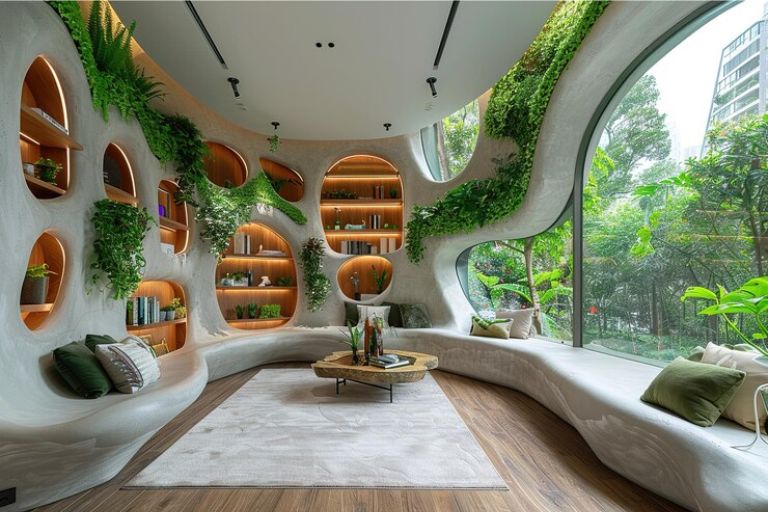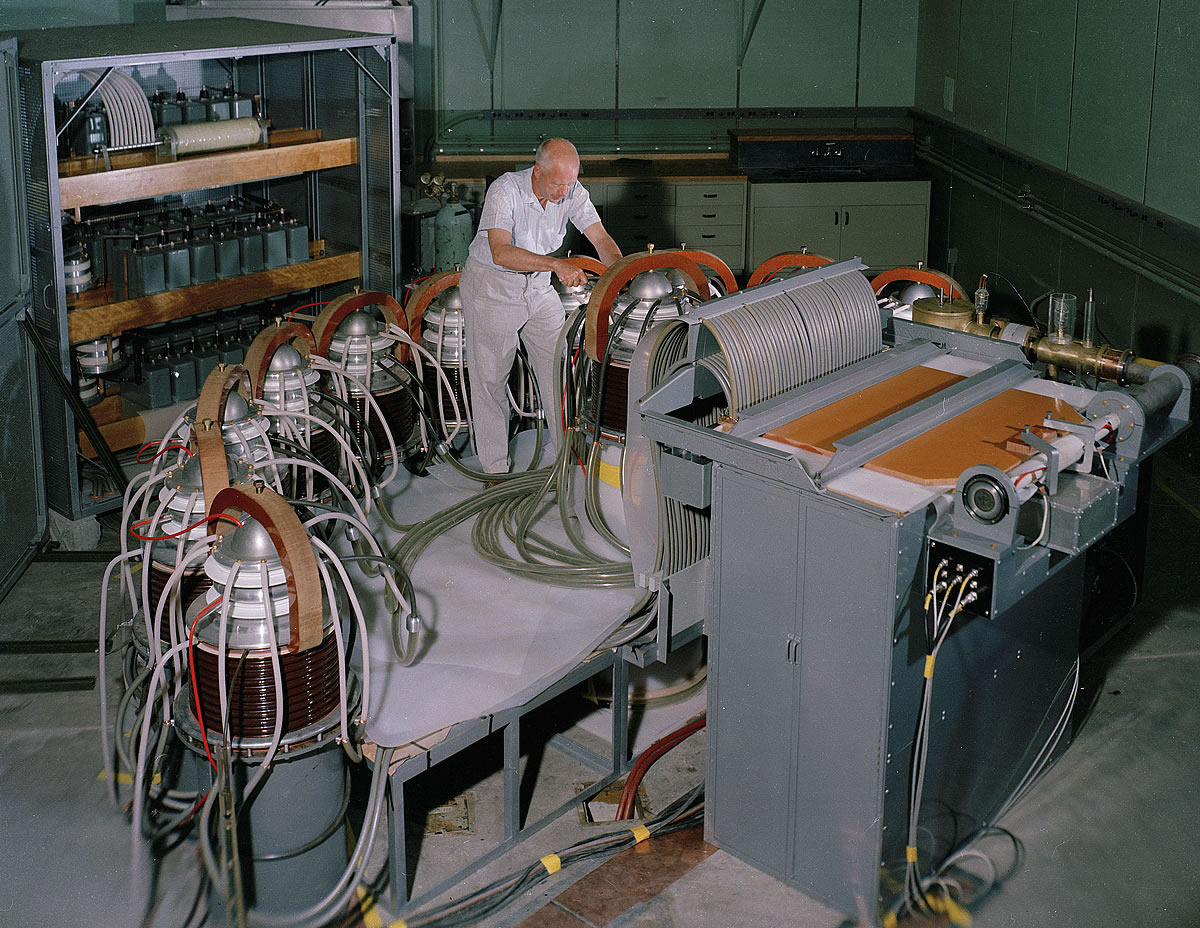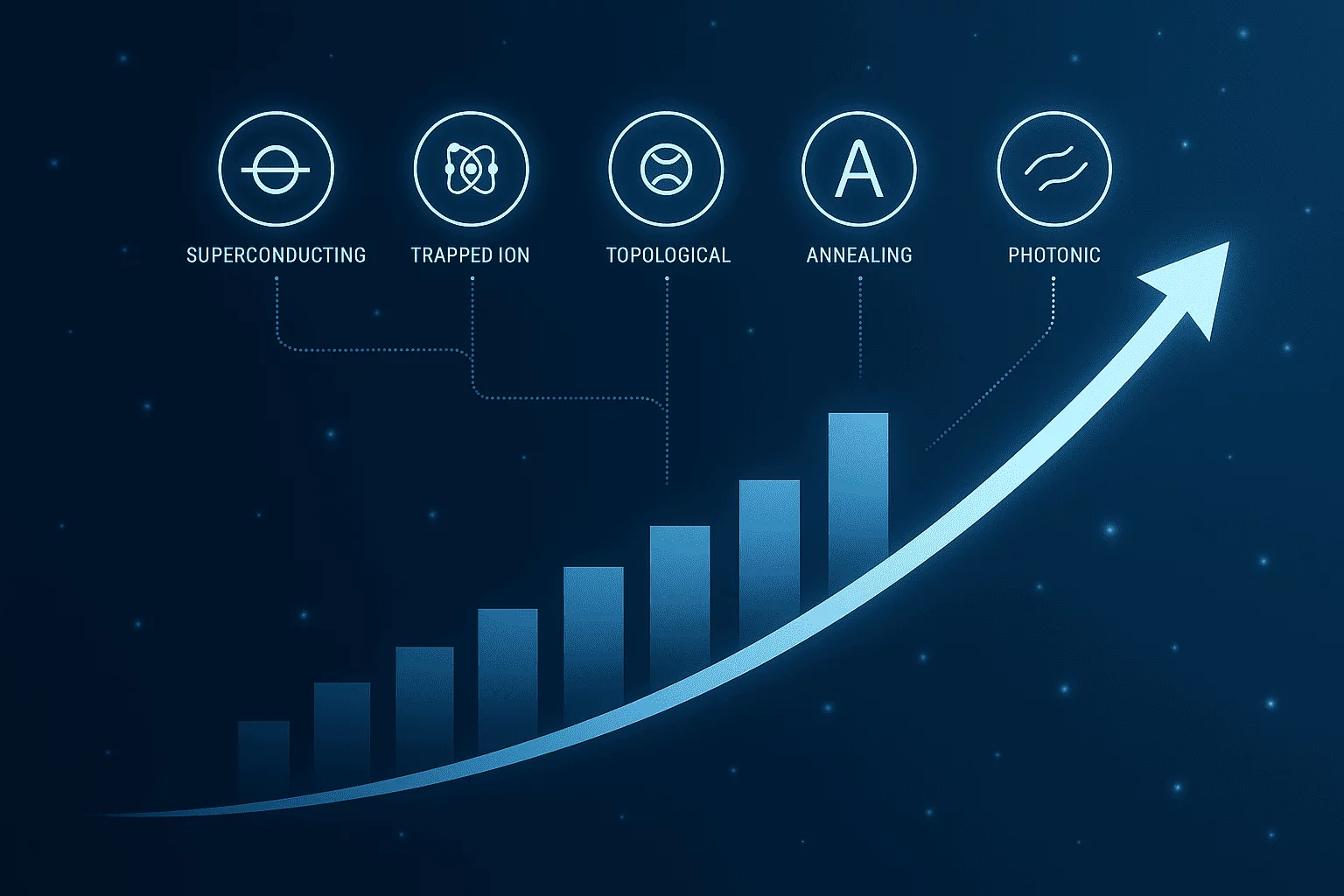Nature has always been our greatest muse. From ancient architecture inspired by landscapes to modern minimalist spaces drenched in earthy tones, the natural world has long shaped the way we build and live. But Nature-Driven Interiors 2.0 takes this relationship to an entirely new dimension—melding biophilia’s timeless principles with advanced technology and innovative materials to create environments that are both sustainable and deeply restorative. Discover how biophilic design meets cutting-edge technology in 2026 interiors. From moss walls to AI-powered daylight systems, explore the future of sustainable, wellness-driven spaces.
Imagine a living room where a hydroponic wall garden cleans your air, AI-powered climate systems adjust humidity for optimal plant health, and smart glass windows respond dynamically to sunlight, mimicking the gentle rhythm of dawn and dusk. Picture a bedroom where organic 3D-printed furniture flows like riverbeds, crafted from recycled wood fibers and bio-resins, while an ambient soundscape brings the forest indoors.
This isn’t just a design fantasy—it’s the future of interiors. And it’s arriving faster than you think. According to MarketsandMarkets, the smart home market is projected to hit $163 billion by 2028, while the biophilic design industry is growing at an estimated 15% CAGR globally. Consumers are no longer satisfied with static décor—they want living, breathing, intelligent spaces that harmonize with nature and technology.
This deep dive unpacks the core elements of Nature-Driven Interiors 2.0, from moss walls and hydroponic gardens to AI-driven daylight systems and sustainable procurement strategies, offering actionable insights for designers, procurement teams, and homeowners eager to embrace the next wave of conscious living.
(Related post: Interior Design Trends for 2026: Diverse Styles with a Common Vision)
The Evolution: From Biophilic Design to Tech-Integrated Living
Biophilia—the innate human connection to nature—has been a design mainstay for years. We’ve seen indoor plants, natural textures, and earthy palettes dominate Pinterest boards. But the next stage, Nature-Driven Interiors 2.0, is about embedding nature into the core of architecture and integrating it with technology to amplify wellness benefits.
Where earlier trends stopped at adding potted greenery, today’s vision includes:
- Smart environmental systems that regulate air quality, light, and temperature in real-time.
- Materials infused with living ecosystems, like moss panels or algae-based partitions.
- Digital biophilia—AI-generated art and AR-enhanced landscapes that expand the sensory experience.
It’s not just aesthetics anymore—it’s about creating ecosystems indoors that support physical health, mental well-being, and environmental stewardship.
Advanced Materials Leading the Change
Moss Walls and Living Partitions
Once a boutique design feature, moss walls are now entering mainstream interiors thanks to innovations in preserved greenery that requires zero maintenance. Global Market Insights projects the green wall market to surpass $4 billion by 2030, with demand driven by both residential and commercial sectors. These walls don’t just look stunning—they improve acoustics, regulate humidity, and filter indoor air pollutants.
Smart Glass and Responsive Surfaces
Electrochromic glass, also known as smart glass, is becoming a game-changer for biophilic design. It automatically tints to control glare and heat, reducing reliance on artificial cooling while maintaining outdoor views. According to a Grand View Research report, the smart glass market is expected to hit $14 billion by 2030, signaling its integration into high-end and mid-market interiors.
Organic-Inspired 3D Printing
3D printing in interior design has matured from novelty to necessity, particularly for custom furniture. Using bio-based filaments like wood composites and mycelium blends, designers can replicate organic patterns—branches, roots, coral formations—while minimizing waste. Research by Allied Market Research indicates that the global 3D printing construction market will surpass $1.5 billion by 2031, with interior applications driving a significant share.
Hydroponic Wall Gardens and Indoor Farming
Indoor agriculture isn’t just for urban farming startups anymore. Hydroponic wall systems are emerging as key features in luxury homes, high-end offices, and wellness spaces. These vertical gardens don’t just offer visual appeal—they contribute to air purification and nutritional benefits, allowing residents to grow herbs and microgreens indoors.
The global vertical farming market is projected to reach $33 billion by 2030 (Fortune Business Insights), underscoring how this concept is shaping mainstream interiors. With automated irrigation and nutrient control systems, these walls align with the wellness-driven home narrative while reinforcing food security and sustainability.
AI-Powered Environmental Controls
Perhaps the most transformative layer of Nature-Driven Interiors 2.0 is the integration of artificial intelligence into environmental management. These systems go beyond simple smart thermostats—they learn user preferences and dynamically adjust conditions for optimal comfort and plant health.
Key innovations include:
- Daylight Simulation Systems: Mimicking natural light patterns to regulate circadian rhythms, improving sleep and productivity.
- Air Quality Sensors Linked to Smart Ventilation: Reducing allergens and maintaining CO₂ levels ideal for concentration and relaxation.
- Dynamic Humidity Control: Tailoring moisture levels for human comfort while ensuring indoor gardens thrive.
According to Statista, AI in smart home ecosystems is expected to grow by 34% annually through 2028, signaling a future where wellness-driven automation becomes standard.
The Aesthetic Language of Nature 2.0
Nature-Driven Interiors 2.0 is as much about how things look and feel as how they function. Expect visual biomimicry, with surfaces inspired by organic fractals, flowing topographies, and earthy textures. Digital fabrication makes this possible at scale, enabling designers to integrate organic patterns into flooring, wall panels, and lighting fixtures.
Furniture crafted from bio-resins or reclaimed wood, shaped like river stones or leaf veins, transforms interiors into living landscapes. Even textiles are evolving—biodegradable fabrics embedded with natural fibers like hemp, nettle, and banana silk dominate the luxury segment.
Why This Matters: The Convergence of Sustainability and Wellness
Today’s consumers are more eco-conscious and health-focused than ever. A 2025 Houzz survey revealed that 72% of homeowners prioritize wellness features in renovations, while 61% rank sustainability as a deciding factor. Nature-Driven Interiors 2.0 answers both needs by:
- Reducing carbon footprint through locally sourced, biodegradable materials.
- Enhancing mental health via restorative green environments.
- Lowering energy consumption with adaptive lighting and ventilation.
The business case is equally compelling. According to the World Green Building Council, wellness-oriented design features can increase property values by up to 15%, and boost workplace productivity by 8–11%—an ROI that procurement leaders can’t ignore.
Procurement in the Nature-Tech Era
Behind the scenes, procurement teams are rewriting playbooks to source living systems and smart components alongside traditional finishes. This includes partnerships with:
- Biophilic design material innovators producing moss panels and algae-based paints.
- Smart-tech manufacturers specializing in daylight systems and adaptive glass.
- 3D-printing specialists offering organic forms using recycled or bio-based filaments.
Procurement no longer means simply buying goods; it’s about curating ecosystems that merge ethics with innovation. Brands that master this hybrid sourcing model will lead the next decade of design.
Global Adoption and Market Trends
Cities like Copenhagen, Tokyo, and San Francisco are emerging as early adopters of Nature 2.0 interiors, integrating these principles into luxury residential projects, coworking spaces, and boutique hospitality. A Knight Frank report notes that properties with biophilic and tech-driven features command price premiums of 10–18%, making this a lucrative strategy for developers.
Corporate offices are also embracing this trend under the ESG mandate, recognizing its power to attract talent and enhance well-being. According to CBRE’s 2025 Global Occupier Survey, 74% of corporations plan to integrate biophilic-smart design into workplaces within the next three years.
Challenges on the Horizon
- High Initial Costs: Advanced materials and automation systems remain premium investments.
- Maintenance Complexity: Living walls and hydroponics require technical upkeep, though automation is bridging this gap.
- Tech Obsolescence: Rapid innovation cycles demand future-proofing strategies to avoid redundancy.
These hurdles highlight the importance of modular systems, adaptive design, and strong supplier partnerships—areas where procurement leaders like Mattias Knutsson emphasize foresight and flexibility.
Conclusion:
Nature-Driven Interiors 2.0 represents more than a design movement—it’s a philosophy of coexistence, where nature and technology converge to create environments that heal, nurture, and inspire. Homes and workplaces are no longer static—they’re dynamic biomes, tuned to our biology, our emotions, and the planet’s health.
As Mattias Knutsson, Strategic Leader in Global Procurement and Business Development, notes:
“The interiors of tomorrow will demand procurement strategies that harmonize sustainability, technology, and human well-being. We’re no longer sourcing products—we’re shaping ecosystems.”
The takeaway is clear: brands, designers, and procurement specialists who embrace this integration will not only meet consumer expectations but set new standards for design excellence and environmental responsibility.
Nature-Driven Interiors 2.0 isn’t a passing trend—it’s a blueprint for a regenerative future, where homes breathe, walls adapt, and design speaks the language of life itself.




